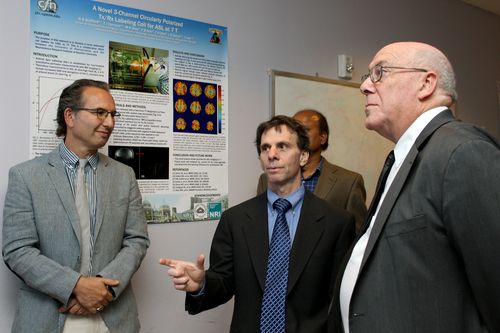Last Monday, following a briefing on thecurrent state of neuroscience research across the United States, held inPhiladelphia's University City Science Center and hosted by Congressman ChakaFattah, we had the opportunity to take the morning's featured speaker, Dr.Philip Rubin, Principal Assistant Director for Science at The White HouseOffice of Science and Technology Policy (OSTP), on a whirlwind tour ofbrain-related research here at Penn Medicine.
When added together, brain diseases andmental health conditions like Parkinson's and depression affect a total of 50million Americans annually, costing an estimated $500 billion dollars a year inmedical and long term care costs. While national and international initiativesare emerging to address the widespread impact of diseases such as Alzheimer'sand stroke, Penn's collaborative efforts are already pushing research forwardinto helping patients today.
Throughout the tour, we visited innovatorsand pioneering thinkers from a range of departments - Neurology, Neurosurgery,Radiology, Psychiatry, Medical Ethics, Engineering, Psychology and Psychiatry -who showed and discussed the latest applications and advances in their areas.As pictured below, we trekked from end to end of the medical campus to give Dr.Rubin a sampling that he said "thoroughly impressed [me] with everythingthat I saw."
Starting the day in the lab of tour leaderFrances Jensen, MD, chair of Neurology, we learned about translational drugdiscovery efforts to treat neonatal seizures. Some 40 percent of children onthe autism spectrum have seizures very early in life, so finding targetedtreatments to help prevent seizures could have a broader impact beyondepilepsy, Dr. Jensen noted.
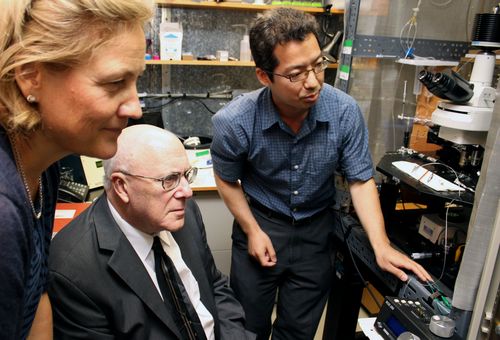
In the Neuro - Intensive Care Unit,division chief Josh Levine, MD, and chair of Neurosurgery, M. Sean Grady, MD,explained how colleagues has developed a way to integrate the terabytes of dataacquired from the dozens of bedside intracranial pressure and cerebral bloodflow monitors to notice trends for an individual or a larger group. By watchinga patient's individual progress over time, the team is able to adjust careaccordingly, setting a new level of integration that could serve as a model forcritical care units across the country.
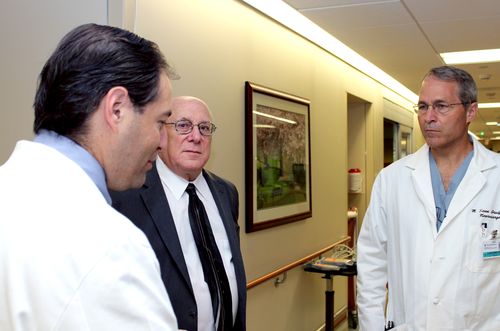
In the Smilow Center for TranslationalResearch, Amita Sehgal, PhD, professor of Neuroscience, demonstrated how herlab uses the fruit fly to study the molecular and genetic components of sleepand circadian rhythms.
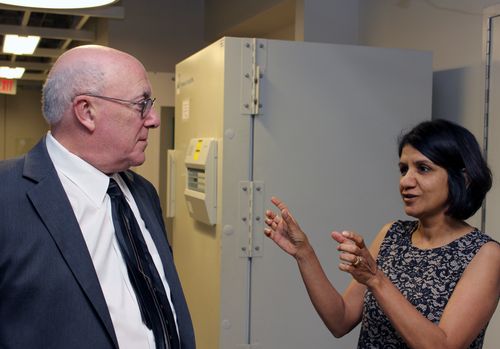
Steven Arnold, MD, director of the PennMemory Center and David Wolk, MD, the Center's associate director, walked usthrough the busy Penn Memory Center and discussed the ways that basic scienceand drug discovery efforts here in Penn's Center for Neurodegenerative DiseaseResearch are pushing Alzheimer's disease therapies into clinical trials faster.
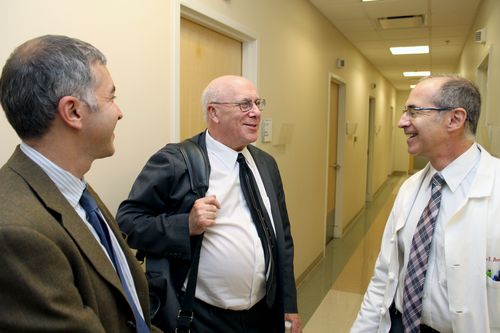
In the afternoon, we visited two brainresearch groups located in an Engineering building across campus. Penn Centerfor Brain Injury and Repair director Douglas Smith, MD, professor ofNeurosurgery, discussed the way his team is stretching axons in animal modelsto hopefully reconnect nerves that have been damaged. He also described worklooking at the impact that just a single traumatic brain injury can have onneurons in the brain and collaborations to conduct important research intoconcussions.
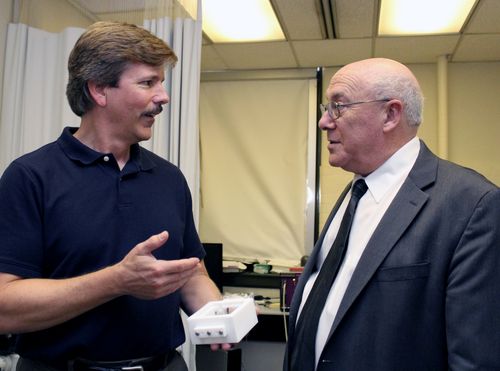
Brian Litt, MD, professor of Neurology, hadhis lab team members each explain to Dr. Rubin how they are developingautomated implantable devices, understanding how seizures begin and spread,interpreting multi-scale neurosignals through machine learning, mappingfunctional networks and circuits in human brain, and inventing novelelectronics technology for high quality signal recording and brain modulation.
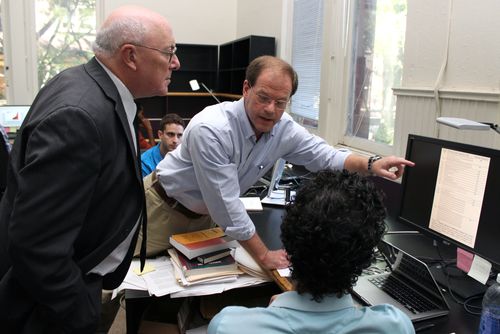
Tim Lucas, MD, PhD, assistant professor ofNeurosurgery, described his lab's efforts to restore motor function forpatients with disability from stroke, trauma, and neurodegenerative conditions.
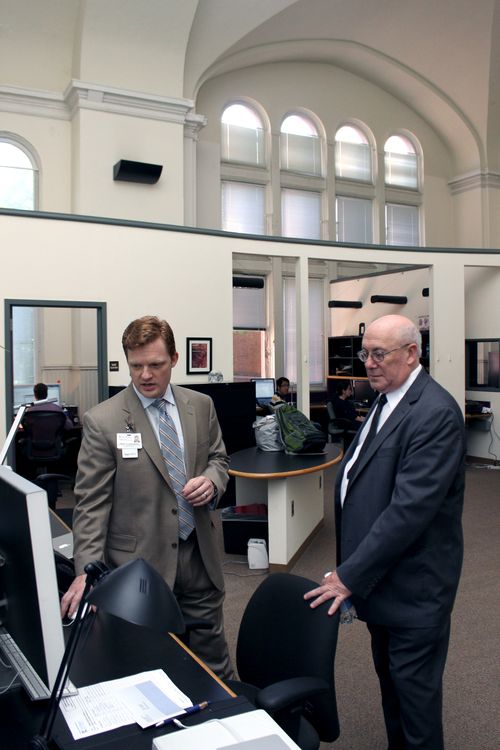
Dr. Rubin also spoke about ethical issues related to neurological diseases, meeting with Penn Center for Neuroscience and Society leaders Martha Farah, PhD, and Geoff Aguirre, MD, PhD, along with Ezekiel Emanuel, MD, PhD, chair of the department of Medical Ethics and Health Policy and the Diane v.S. Levy and Robert M. Levy University Professor and Vice Provost for Global Initiatives.
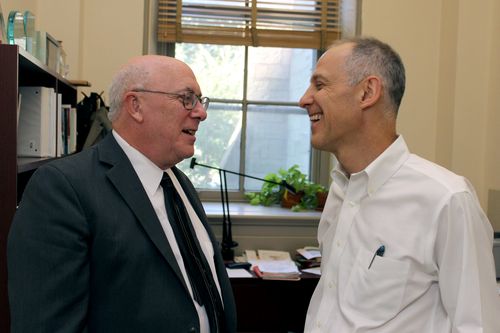
Rounding out the day, Dr. Rubin stopped totalk with a team to discuss brain mapping, biomarker and real-time diagnosticmonitoring efforts that the inventive team in Radiology. Mitchell D. Schnall,MD, PhD, chair of Radiology and John Detre, MD, Professor of Neurology anddirector of the Center for Functional Neuroimaging described how Penn Radiologyhas played an integral role in advancing tools to map fiber tracts in the brainthat can be used to guide surgery, creating ways to measure cerebral blood flowand metabolism under normal and conditions and in response to brain injury, anddeveloping biomarker measures for Alzheimer's and other neurodegenerativediseases.
